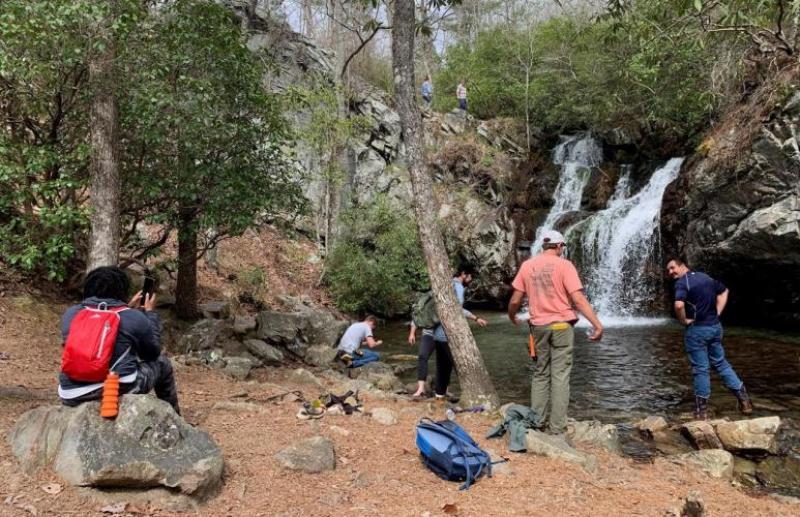
MSU Undergraduates Study Ancient Mountains
Around 300 million years ago, tectonic plates collided in what is now the eastern United States, crushing and bending rock into the Appalachian Mountains. Structural Geology undergraduates investigated the stresses and rock materials that produced these mountains by searching for evidence of deformed rock in Birmingham’s Red Mountain Expressway Roadcut and eastern Alabama’s Cheaha State Park.
In Birmingham, students were able to describe and identify layers of tilted rock- ancient beaches, reefs, and lagoons deformed during mountain building. They were able to conclude that these rocks, laid down in layers during the Silurian period (over 400 million years ago) were deformed during the orogeny. Farther east in Cheaha State Park and the Talladega National Forest, students hiked to an abandoned quarry where they were able to sketch, describe, and measure additional signatures from the Appalachian orogen. By comparing rock types and geologic structures, students were able to discover that by traveling east they had moved closer to the core of the mountains.
The skills our students learn on these field trips include mapping, taking field notes, measuring the orientations of rocks, and practicing field safety. Back in the classroom, they use their own fieldtrip data to learn data analysis techniques like stereonet analysis and cross section construction. Together, these skillsets will serve them as they begin their careers as geologists.